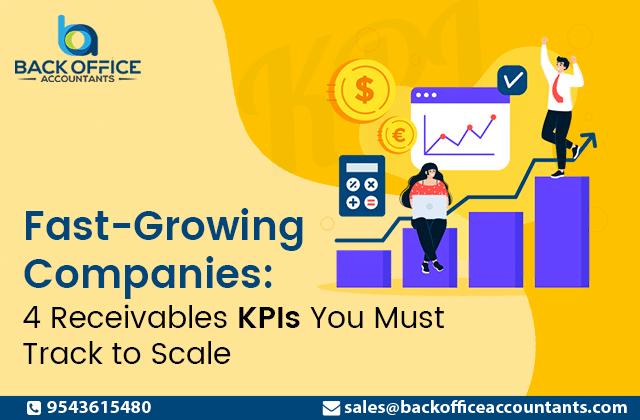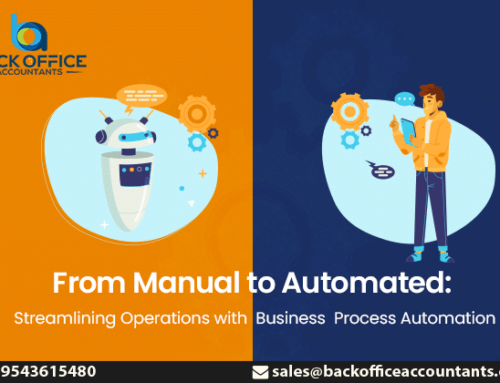To keep a healthy cash flow, fast-growing companies must manage their receivables efficiently. As a company scales, it is crucial to comprehend the accounts receivable process and monitor important KPIs to optimize the process. This article will examine four essential accounts receivable Kpis that fast-growing companies must track to maintain a healthy cash flow and a scalable business.
1. Cash-to-Cash Cycle Time:
It is smart to understand the key accounting trends. The cash-to-cash cycle time is a key performance indicator (KPI) that measures how long it takes for a company to transform its investments in inventory and other resources into cash. The process begins the moment the company makes a payment to obtain raw materials or inventory to create goods or services and concludes when the company receives payment for those goods or services. This metric provides valuable insights into the efficiency of a company’s receivables process and can aid in identifying areas for improvement.
If a company has a longer cash-to-cash cycle time, it means that it takes a longer time for them to receive payment after investing in inventory. This can put a strain on the company’s cash flow. A company can free up cash for other purposes, such as investing in growth opportunities or paying off debt, by reducing the cash-to-cash cycle time. To improve this metric, a company can work on improving its invoicing process, shortening payment terms, and incentivizing early payment.
2. Payment Arrangement Percentage:
The payment arrangement percentage is a key performance indicator (KPI) that measures the proportion of a company’s unpaid receivables that have a payment agreement in place. Payment arrangements are mutually agreed-upon plans between the company and its clients to postpone the due date of the payment. This KPI is crucial as it helps the company to identify clients that are having difficulty paying and enables them to collaborate with the clients to find a mutually beneficial solution.
A high payment arrangement percentage may indicate that the company’s clients are experiencing financial hardship, which can jeopardize the company’s cash flow. By identifying these clients and collaborating with them to find a solution, the company can mitigate the risk of non-payment and enhance its cash flow. To lower the payment arrangement percentage, the company can concentrate on enhancing its credit policies, conducting credit assessments on new clients, and strengthening its collection process.
3. Invoice Aging by Customer:
Measuring the number of days it takes for a customer to pay an invoice, the Invoice Aging by Customer is a key performance indicator (KPI). This KPI is used to monitor the payment history of individual customers and identify those who consistently pay their invoices late. If a company identifies such customers, it can work with them to find a solution that benefits both parties.
A high invoice aging by customers can indicate that the customer is facing financial difficulties or has little respect for payment terms. By addressing these issues, a company can minimize the risk of non-payment and improve its cash flow. To improve invoice aging by customers, a company can take steps such as enhancing its collections process, sending reminders to customers before the due date, and offering incentives for early payment. By outsourcing accounting functions to backoffice accounting firms, businesses can focus on their core competencies and growth strategies.
4. Payment Terms Compliance:
Payment terms compliance is a Key Performance Indicator (KPI) used to measure the percentage of invoices that are paid within the agreed-upon payment terms. This KPI helps track the company’s ability to collect payments from customers within the specified period. By keeping a check on payment terms compliance, the company can recognize customers who frequently delay payments and take appropriate action to resolve the issue.
A low payment terms compliance rate could indicate customer dissatisfaction or financial difficulties, posing a risk to the company’s cash flow. By identifying such concerns and addressing them, the company can minimize the risk of non-payment and improve its cash flow. To improve payment terms compliance, companies can work on enhancing their invoicing process, provide clear payment terms, and follow up with customers who regularly pay their invoices late.
In conclusion, fast-growing companies that want to maintain a healthy cash flow and scale their business must manage their receivables effectively. Poor accounts receivable practices can lead to cash flow problems and damage a company’s reputation with customers. Once companies assess these markers, they can formulate a strategy that can indeed lead to better sales. Backoffice Accountants is a prominent provider of accounting services for rapidly developing firms, offering a variety of solutions to assist organizations in streamlining their financial processes and optimizing their performance. Contact backoffice accountants today to discover more about how they can assist your business in growing.







